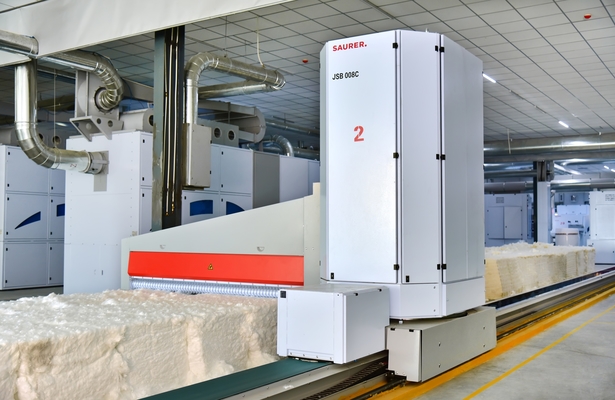Draft of Blow Room:
As the material passes through the nip of the rollers with step-up speeds, it gets pulled or attenuated. This motion of drawing or pulling of the stock continues throughout the spinning process. In some cases, there is purposeful attempt made to attenuate the material; while in some others, a very slight pulling action is exercised. At most of the places in the blow room, the latter action is followed, whereas, the former action is used in many subsequent processes till the final yarn is formed. In this article I will discus about draft calculation of blow room with examples. We can express draft is as follows:
……………….Draft Constant
Draft = ———————————————-
…………..Change Wheel Teeth

There are three types of drafts in blow room:
- Mechanical Draft (M.D.)
- Actual or Resultant Draft (A.D./R.D.) and
- Tension Draft
Mechanical Draft:
The relative speed difference in the rate of feeding and rate of delivery results in mechanical drafting action. It is governed by the mechanical gears or pulleys.
Mechanical Draft = (Length Delivered) ÷ (Length Fed)
= (Rate of Delivery) ÷ (Rate of Feeding)
= (Surface Speed of Delivery Roller) ÷ (Surface Speed of Feed Roller)
Actual or Resultant Draft:
…………………………………………Hank delivered
Actual or Resultant Draft = ——————————————- × Number of doublings
……………………………………………..Hank fed
………Weight fed
= ———————————— × Number of doublings
….Weight delivered
The relation between the Actual Draft and Mechanical Draft is given as follows:
…………………….Mechanical Draft
Actual Draft = —————————————– × 100
……………………..(100–waste%)
Tension Draft:
At many places in spinning, only a slight stretching action is required to be ex-ercised on the material rather than the regular thinning out operation. Such tensioning is necessary to avoid sagging or wrinkling of the material in the process. This con-trolled stretching is called Tension Draft.
Problems and Solutions of Draft Calculation in Blow Room:
Problem 1: The actual draft in the finisher scutcher is 3.8, while the weight of the lap sheet fed is 12.8 oz per yard and 4 such breaker laps are fed to finisher. If the process removes 2.1% waste, calculate the mechanical draft and weight per yard of the lap delivered.
Solution:
Mechanical Draft = [Actual Draft × (100 – waste%)] ÷ 100
= [3.8 × (100–2.1)] ÷ 100
= 3.72 (Ans)
Also, Actual Draft = [weight fed/yd ÷ weight delivered/yd] × No. of Doublings
Hence, 3.8 = (12.8 × 4)/weight delivered
Weight delivered = (12.8 × 4) / 3.8 = 13.47 oz/yd (Ans)
Problem 2: The final lap dimensions are 38-inch width and 26-inch diameter. If the full lap weight is 40 lb, find the density of lap.
Solution:
Volume of lap = π × [diameter/2]2 × width
Volume of lap = π × [26 ÷ (2 × 36)]2 × 38/36 cubic yard
= π× 0.13 × 1.005 = 0.4096 cubic yard
Therefore, Lap Density = Mass/Volume
= 40/0.4096
= 97.65 lb/cubic yard (Ans)
Problem 3: A blowroom lap of 300 g/m is delivered by a calendar roller of scutcher. The waste extracted at three-bladed beater and Kirschner beater taken together amounts to 1.8%. The mechanical draft between the feed roller of 3 B.B. and cage delivery roller of Kirschner Beater is 2.7 while that between cage delivery roller of Kirschner Beater and bottom Calender Roller is 1.4. Find the actual draft. Also, find the weight of the material on feed lattice of Three Bladed Beater.
Solution:
Total Mechanical Draft = 2.7 × 1.4 = 3.78
Actual Draft = (Mechanical Draft × 100)/(100 – waste%)
= (3.78 × 100)/(100 – 1.8)
= 3.849 (Ans)
Weight of the material on the lattice of Three Bladed Beater will be:
Weight of lap delivered by calendar roller x Actual Draft
= 300 × 3.849
= 1154.7g/m (Ans)
You may also like:
